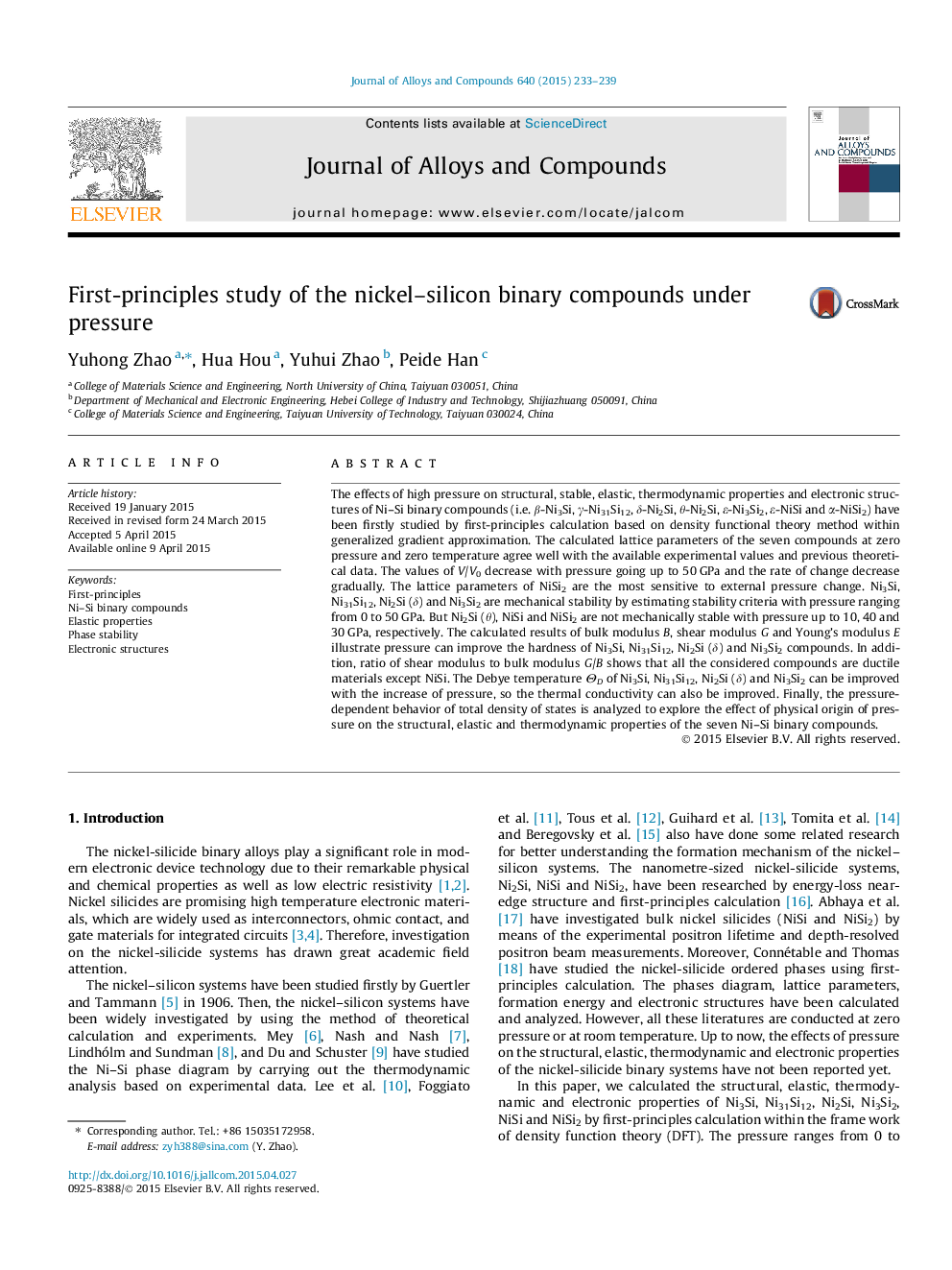| کد مقاله | کد نشریه | سال انتشار | مقاله انگلیسی | نسخه تمام متن |
|---|---|---|---|---|
| 1608964 | 1516253 | 2015 | 7 صفحه PDF | دانلود رایگان |
• The structural and elastic properties of Ni–Si system under pressure are firstly studied.
• The lattice parameters of NiSi2 are the most sensitive to external pressure change.
• Ni3Si, Ni31Si12, Ni2Si (δ) and Ni3Si2 are mechanical stability with pressure up to 50 GPa.
• The hardness of the four compounds can be improved by increasing pressure.
• Electronic structures are analyzed to understand pressure effect on the seven compounds.
The effects of high pressure on structural, stable, elastic, thermodynamic properties and electronic structures of Ni–Si binary compounds (i.e. β-Ni3Si, γ-Ni31Si12, δ-Ni2Si, θ-Ni2Si, ε-Ni3Si2, ε-NiSi and α-NiSi2) have been firstly studied by first-principles calculation based on density functional theory method within generalized gradient approximation. The calculated lattice parameters of the seven compounds at zero pressure and zero temperature agree well with the available experimental values and previous theoretical data. The values of V/V0 decrease with pressure going up to 50 GPa and the rate of change decrease gradually. The lattice parameters of NiSi2 are the most sensitive to external pressure change. Ni3Si, Ni31Si12, Ni2Si (δ) and Ni3Si2 are mechanical stability by estimating stability criteria with pressure ranging from 0 to 50 GPa. But Ni2Si (θ), NiSi and NiSi2 are not mechanically stable with pressure up to 10, 40 and 30 GPa, respectively. The calculated results of bulk modulus B, shear modulus G and Young’s modulus E illustrate pressure can improve the hardness of Ni3Si, Ni31Si12, Ni2Si (δ) and Ni3Si2 compounds. In addition, ratio of shear modulus to bulk modulus G/B shows that all the considered compounds are ductile materials except NiSi. The Debye temperature ΘD of Ni3Si, Ni31Si12, Ni2Si (δ) and Ni3Si2 can be improved with the increase of pressure, so the thermal conductivity can also be improved. Finally, the pressure-dependent behavior of total density of states is analyzed to explore the effect of physical origin of pressure on the structural, elastic and thermodynamic properties of the seven Ni–Si binary compounds.
Journal: Journal of Alloys and Compounds - Volume 640, 15 August 2015, Pages 233–239
